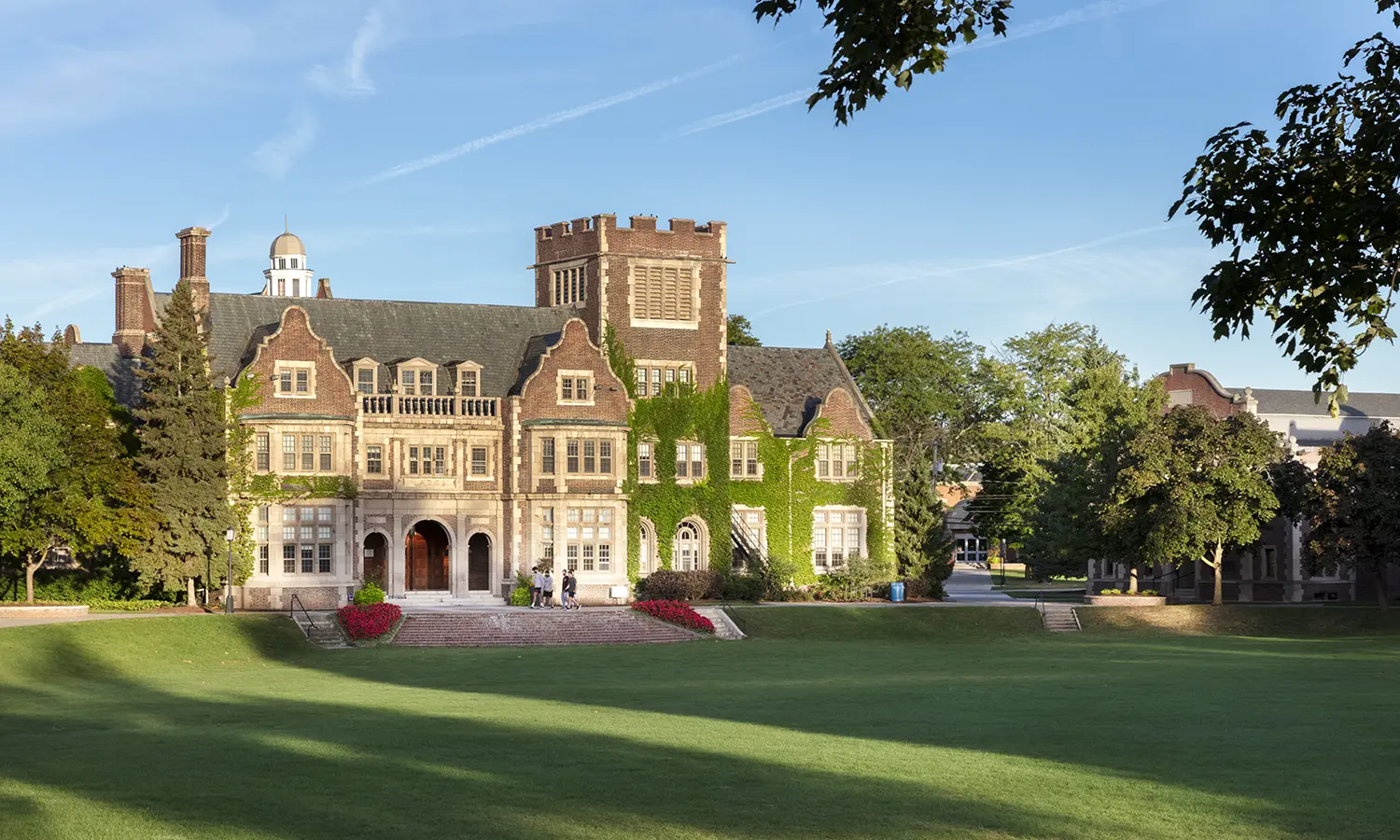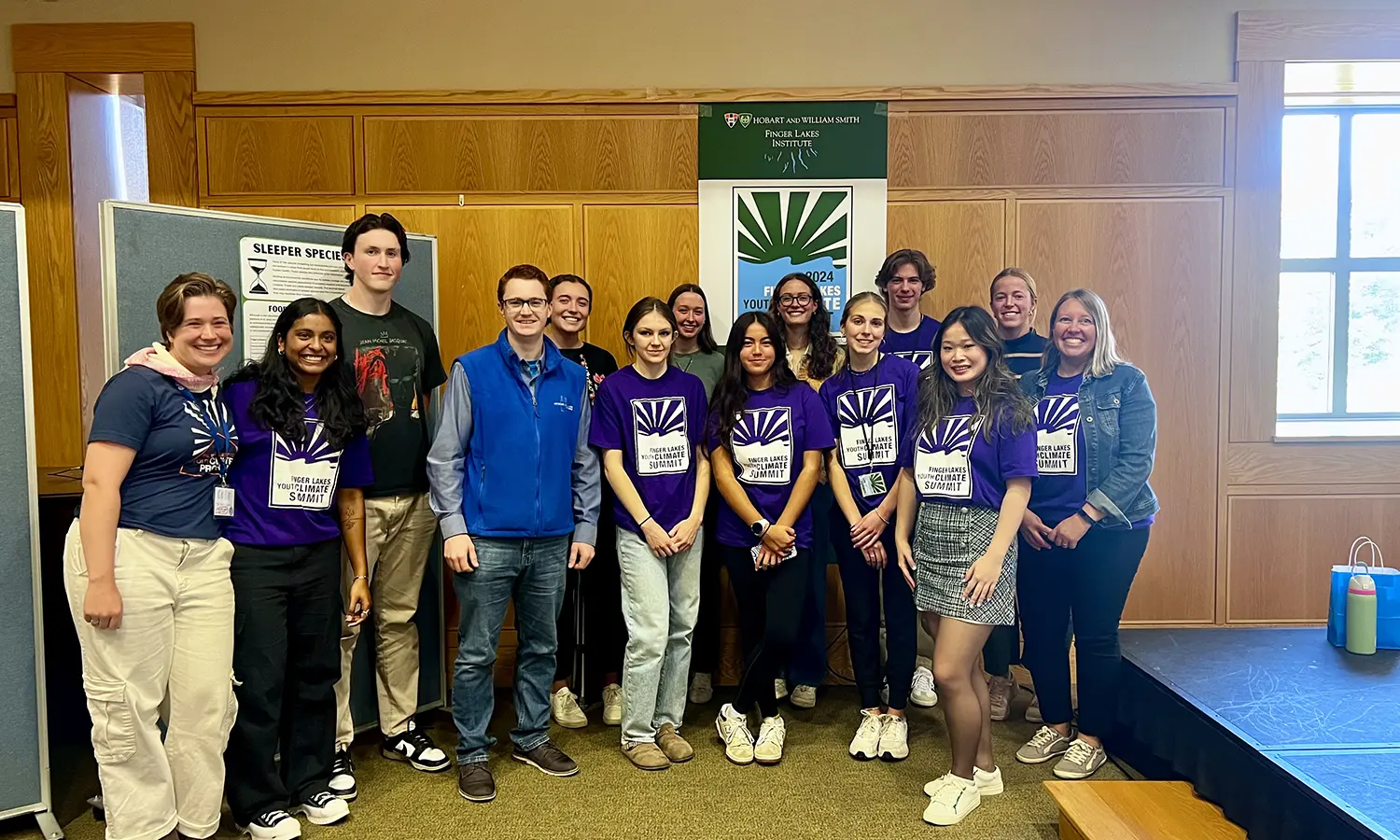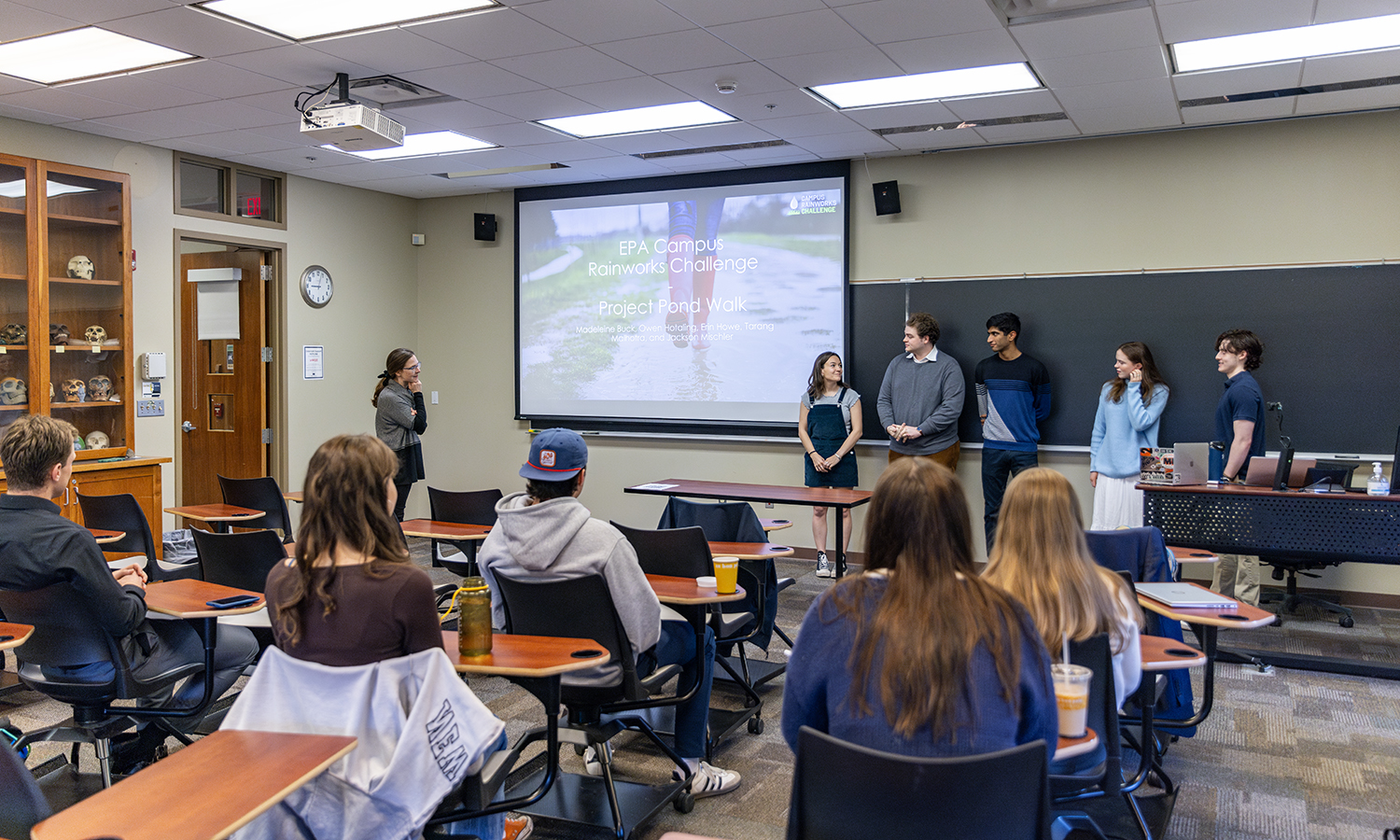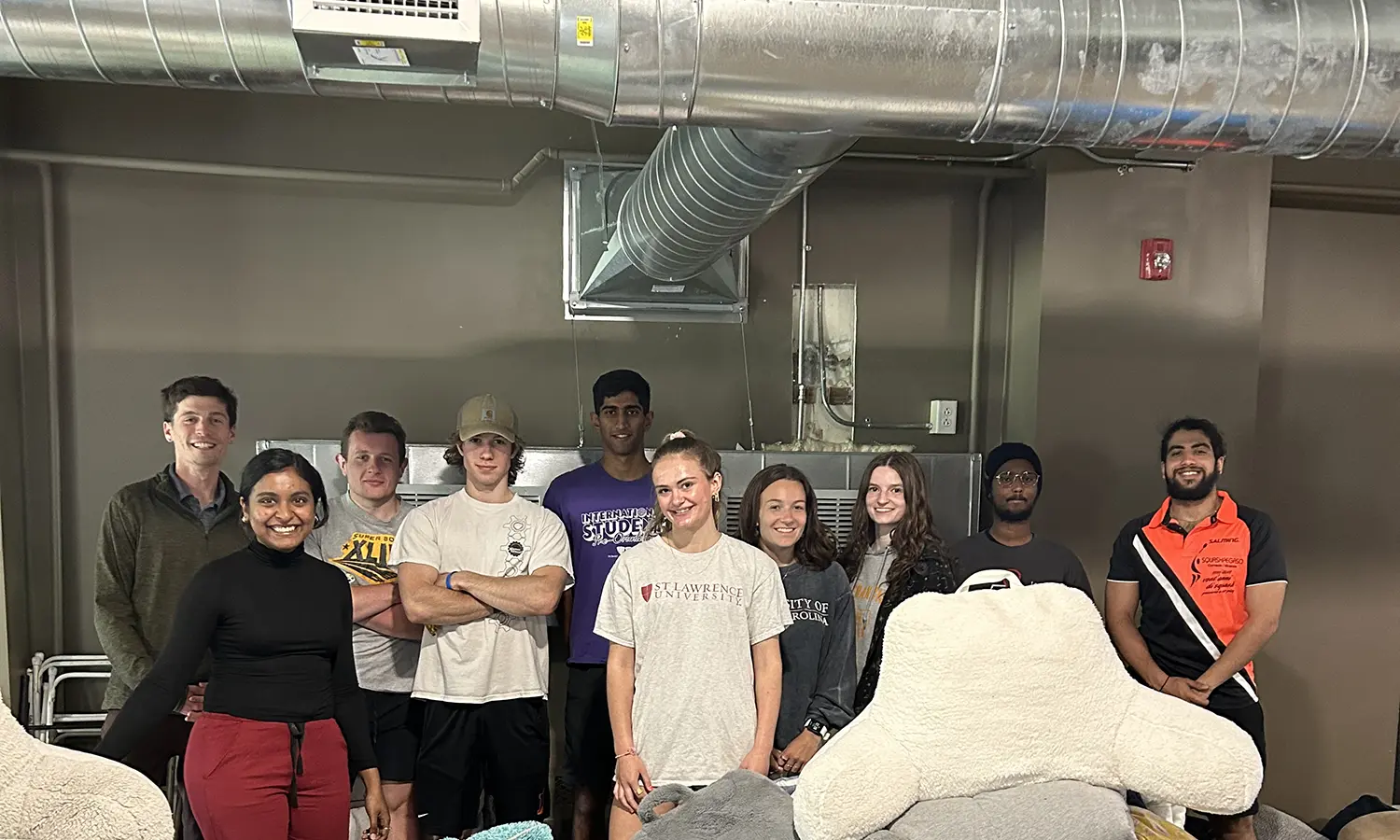
HWS News
3 April 2024 • Sustainability HWS Reaches Climate Neutrality
A year ahead of schedule, HWS becomes one of only 11 colleges and universities nationwide to achieve net zero greenhouse gas emissions.
In 2024, Hobart and William Smith’s commitment to environmental sustainability hit a critical milestone: as of January, HWS is climate neutral thanks to renewable energy production, sustainable practices, and “offsets” that result in zero increase in net production of carbon, methane and other greenhouse gases. This achievement was reached a year earlier than expected and puts HWS among only a handful of colleges and universities nationwide to achieve net zero emissions.

On Thursday, April 11, the President’s Forum Series hosted a panel with alumni and students discussing climate neutrality efforts and the future of climate change.
“This is a huge, multiyear success,” says Professor Tom Drennen, the Stine Family Endowed Chair in Management and Entrepreneurship, who has helped lead HWS sustainability initiatives since its inception. “We committed to net zero emissions in 2007 and it’s taken years of planning and effort to get us to this point, so it’s very exciting.”
“I am grateful for our community’s support and dedication in reaching this goal,” says President Mark D. Gearan, who signed the American College & University Presidents Climate Commitment in 2007, pledging HWS to reach climate neutrality by 2025. “This is a remarkable achievement, and also demonstrates our innovative research, collaborative relationships between students, faculty and staff, and partnerships with Geneva and the Finger Lakes community. This is a proud and historic moment for Hobart and William Smith.”
As Drennen explains, HWS’ “comprehensive approach” supports decreasing and offsetting not only carbon emissions but all greenhouse gases.
Often integrated with coursework and service projects, sustainability initiatives include green energy as well as campus buildings, food systems, open spaces, transportation, waste management and water:
- HWS generates electricity from two nearby solar farms — together representing one of the largest solar installations at a higher education institution in New York State — that deliver roughly 50 percent of the campus’ electricity.
- New campus buildings are outfitted with energy efficient mechanical systems and follow LEED (Leadership in Energy and Environmental) standards and protocols.
- The Finger Lakes Institute provides vital information to policymakers and stakeholders to protect and support the regional environment.
- HWS practices campus-wide recycling, and composting.
- Pollinator conservation and education is incorporated into HWS land management, coursework, service learning, research, and community engagement.
- HWS has embraced electric vehicles and other low-impact modes of transportation, such as the Yellow Bike Program.
- Water reduction and management initiatives support sustainability in campus buildings as well as outdoor spaces.
Beyond solar powered energy, the remaining portion of campus electricity is offset by wind power generated elsewhere in the U.S., which HWS supports by purchasing credits. Offset credits also neutralize HWS’ other direct emissions, like those produced by heating campus buildings, as well as indirect “Scope 3 emissions” produced, for instance, by off-campus travel as part of study abroad programming or athletics competitions.
In December, the Princeton Review’s Guide to Green Colleges: 2024 Edition recognized Hobart and William Smith as one of the most environmentally responsible schools in the country. Earlier in 2023, HWS received recognition from Bee Campus USA and Tree Campus Higher Education programs for unwavering dedication to upholding a sustainable campus.



